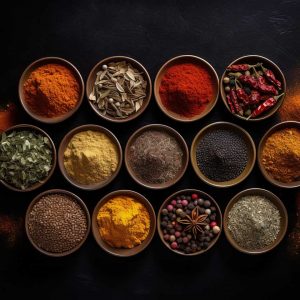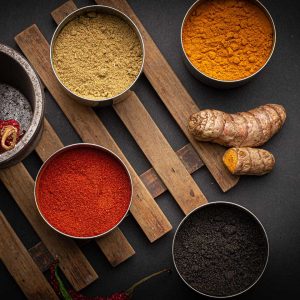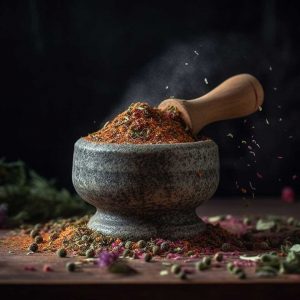The benefits of Indian spices
 Secondly, they are good for your health! Almost all spices are rich in antioxidants; recognised as being anti-cancer and warding off chronic diseases.
Secondly, they are good for your health! Almost all spices are rich in antioxidants; recognised as being anti-cancer and warding off chronic diseases.And finally, they also have incredible nutritional value. Fibre, potassium, calcium and iron; these coloured powders add great nutritional value to any meal. Let’s take a closer look at one of them: turmeric.
It is rich in fibre, iron and potassium, but is equally high in calcium, zinc, vitamin E and magnesium. Here’s its entire composition per 100 gr. PS: Be aware with these calculations as we generally don’t end up eating more than about 3 grams at a time.
Nutritional values per 100 gram:
It has many therapeutic benefits:
• reduces the risks of cardio-vascular disease
• helps reduce the risk of cancer (and prevents the development)
• shortens the duration of post-surgical rehabilitation
• expands the remission time in cases of ulcerative colitis
• boosts the production of breast milk (when combined with fenugreek and ginger)
• is a powerful antioxidant
PS: avoid turmeric if you are suffering from renal or biliary stones!!
How to use?
Article written by Constance De Keyzer, paediatric, perinatal and adult dietician – specialising in veganism – June 2023 – www.fourchettecurieuse.be
Dim sum, those small culinary wonders from Chinese cuisine, captivate taste buds around the world with their variety and delicacy. Accessible and fun to prepare,...
Wakame is a marine algae and a key ingredient in many Asian recipes, especially Japanese. Recognizable by its dark green color and tender texture once...
Tofu, often overlooked and underrated, can surprise with its subtle taste. But do not be mistaken, its neutrality is its strength. Capable of blending into...






























